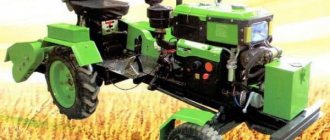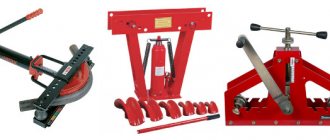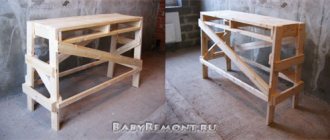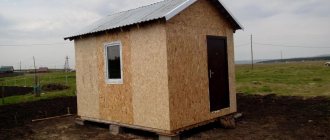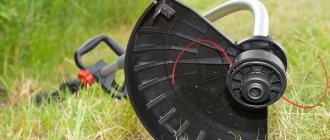As soon as walk-behind tractors and walk-behind cultivators appeared on the market, manufacturers began to think about additional mechanisms for them, such as trenchers for walk-behind tractors, hillers, mowers, and potato diggers. All this helps amateur gardeners and farmers carry out any work on their land plots such as cultivating the soil, planting vegetables, harvesting, and mowing grass. Mounted and trailed machines facilitate manual labor, increase productivity, speed up and simplify the process as a result of mechanization.
This review will consider one of the types of attachments - a trencher for a walk-behind tractor.
Ways to increase speed on a walk-behind tractor
Many farmers are interested in how to increase the speed of a walk-behind tractor. The most common agricultural machinery is a walk-behind tractor. With its help, work on land and personal plots is greatly simplified. Let's look at how you can increase the speed of this technique. With increased speed, the performance and maneuverability of the mini-machine will increase, which can be used in any season and weather.
Trencher in action
The operation of the unit is simple: after starting the cutting mills, digging a trench begins.
Next, the chassis drive is started, which causes the device to move, and the auger or blade shovel moves the excavated soil on the surface away from the clearing. Of course, a homemade device for digging a trench with a walk-behind tractor makes the work easier, saves time, effort, money, and turns ditch digging into a routine procedure.
How to increase the speed of a walk-behind tractor
You can increase the speed of the walk-behind tractor in two ways:
- installation of large wheels;
- replacing a gear pair.
Let's first look at how changing wheels helps increase the speed of a motor cultivator. The standard wheel size of almost all mini-unit models is 57 cm. When replacing, you can install tires 1.2 times larger in diameter. Typically, wheels of 70.4 cm are used. Despite the small difference, the speed of the walk-behind tractor increases noticeably. If the arches into which the tires are inserted allow you to insert wheels with a larger diameter, then you can try adding centimeters.
When using a walk-behind tractor for cultivating land, lugs are used. These are wheels with iron plates that freely grip the ground or snow. They can be purchased in specialized stores, or you can make them yourself. Their size also affects the speed of movement of the unit.
Let's look at how to increase the speed on a walk-behind tractor using the second method. Like any equipment, the cultivator has several speeds, which are controlled using gears. Typically, cultivators move at a speed of 2 to 15 km/h, with the large gear having 61 teeth and the small gear having 12. To increase the speed, the gear pairs of the gearbox are replaced. We increase the number of teeth, thus achieving the maximum speed of the walk-behind tractor.
It is recommended that replacement be carried out by professionals and preferably in specialized centers, since parts machined with minimal error will affect the operation of the motor. It is important not only to replace the gear, but also to select the correct pulley.
The lineup
It is worth distinguishing two categories of technology:
Specialized equipment is represented by brands:
- Laski TR50;
- OJSC "Mikhnevsky RMZ";
- Kwik-TrenchEarthSaw;
- GroundHog T4;
- TKMG-1200;
- Sable /BS/50/;
- Vermeer RT60;
- Barreto 912HM;
- GroundHog T-4 Trencher.
Motoblock trenchers are represented by the TrenckIt model, which is produced by the manufacturer QuickAttah. This equipment is connected to both gasoline and diesel walk-behind tractors, the engine power of which ranges from 8 to 15 horsepower. For ease of work, tracked or wheel-driven equipment can be used.
How to make reverse gear on a walk-behind tractor
Let's look at how to make reverse gear on a walk-behind tractor. The presence of reverse depends on the model and dimensions of the mini-equipment. You can cultivate the land with a motor-cultivator, a light walk-behind tractor and a heavy unit. It all depends on your goals and objectives. Typically, when using models weighing up to 30 kg, there is no need for reverse speed, and it also complicates the design of the unit. On a heavy unit without this function it will be more difficult to perform work.
Without a gearbox, agricultural machinery will not move. It happens:
The purpose of the bevel gearbox is to ensure that the transmission collides with the engine, which affects the power of the gearbox. The gear is the transmitter between the motor and the wheels. A reduction gearbox is used to reduce the speed to increase power.
The reverse mechanism has a clutch located between the gears. They are located on the main roller. The main task of this system is to ensure the reverse movement of the vehicle. To make this mechanism yourself, the first step is to prepare the body, for which many people use a two-inch fitting square.
You can use a generator shaft from a Ural motorcycle. The gears will fit from the Druzhba chainsaw. You just need to drill a hole of the appropriate diameter in the shaft. On the opposite side, mount another gear shaft with bearings. And already on the weekend, install a pulley to ensure rotation.
You can purchase a ready-made gearbox, but when purchasing, it is better to give preference to more expensive mechanisms, since they are more reliable and last longer.
Among the malfunctions of gearboxes, users highlight the rapid wear of gears and the fact that the gear falls out.
If you increase the speed of the cultivator, you need to take into account that wear will occur much faster. When performing earthworks, you want to quickly complete the task. To increase or decrease the speed of movement, you can try the throttle. If the work ahead is hard, then when the gas is reduced the engine will stall.
The first speed is used when plowing the land, when more power of the unit is required. Accelerated work reduces the depth of cultivation.
A walk-behind tractor is an indispensable equipment for a gardener.
The walk-behind tractor is similar in design to a tractor, but with one axle. This is a device that you cannot do without when cultivating the soil. The term walk-behind tractor began to be used more often in the 80s; previously this technique was called a walking tractor or a single-axle tractor. It greatly facilitates the monotonous manual work of loosening the soil for planting various garden crops. In addition, the walk-behind tractor can perform several functions at a low cost. Work on this equipment occurs in this way: a person follows the walk-behind tractor, steering the steering wheel.
Walk-behind tractors are divided into wheeled and motor-cultivators. They are distinguished by the method of aggregation. The first one is switched into operating mode when the wheeled chassis moves. In the second, the wheel part is replaced by a milling cutter.
This equipment has a gasoline or diesel engine that drives the unit, and a wheel pair. For field work, you may need other devices that are connected through the towbar of the walk-behind tractor.
Source
Increasing the power of the walk-behind tractor
You can increase the speed of the walk-behind tractor in the following ways:
- replacing a gear pair;
- installation of wheels with a large diameter.
Increasing speed in the first way is a rather complicated process. Therefore, without knowledge and skills in this area, it is better not to do this yourself and contact a special service center. If you have the necessary skills, you can make the replacement yourself. Just like any other equipment, the walk-behind tractor has several speed modes controlled using gears. The walk-behind tractor moves at a speed of 2 to 15 km/h. The larger gear usually has 61 teeth, and the small one – 12. To increase the power of the walk-behind tractor, the gear pairs of the gearbox are replaced. Maximum speed can be achieved by increasing the number of teeth on the gear.
When replacing a gear, be sure to select the correct pulley. If the pulley is selected incorrectly, the walk-behind tractor may stop working.
How to make a walk-behind tractor go faster by changing wheels? Motor cultivators have a standard wheel size of 57 centimeters.
To increase the speed, you can install tires with a diameter of 70.4 cm; such a replacement will help speed up the walk-behind tractor several times. If the arches in which the tires are placed allow the installation of wheels with a larger diameter, you can try to increase them by a few centimeters.
From tractor to boat
The most common modifications from a conventional walk-behind tractor are all kinds of complex equipment and vehicles.
True, the latter can be more called homemade products based on the engine and transmission of the device. Potato planters . If there is a large area for planting potatoes, a device based on a walk-behind tractor would be ideal. It includes several elements at once. First of all, the potato planter is equipped with a small hopper for tubers.
In front of it is a plow that makes a ditch, and behind it is a hiller that fills and forms a bed. All devices must be adjustable in accordance with the planting depth and size of the beds.
Increasing cross-country ability and improving the walk-behind tractor
So, how to improve a motor cultivator with the help of weights. You can buy them or make and install them yourself. Weights are installed on the frame and wheels. Wheel weights are made of solid profiles and steel wheels. The body is weighted using special removable frames and a corner. Loads with different weights and configurations are attached to the frame.
So, sometimes you need to make a motor cultivator quite heavy, you can use reinforced concrete products.
Such loads can load the walk-behind tractor quite well. With the help of such simple devices, the range of application of technology is significantly expanded.
How to increase the power of a walk-behind tractor using reverse speed
Setting the reverse speed on a walk-behind tractor is another way to improve the walk-behind tractor. The presence of reverse depends on the sizes and models. It can work on any type of equipment, it all depends on the tasks assigned to the equipment, be it a light or heavy walk-behind tractor, or a motor-cultivator. For equipment weighing up to 30 kg, there is no need for reverse speed, but on a heavier unit it is more difficult to weed without it.
A gear reducer is a transmitter that operates between the wheels and the motor. The reverse gearbox consists of a clutch located between the gears and located on the main shaft. The corner is responsible for the operation of the transmission with the engine, which affects power. The reduction gearbox is responsible for reducing the speed, which helps increase power. The main task of this system is to provide reverse gear. To make this mechanism at home, you first need to make the case. Then select the necessary parts. But it’s better to buy a ready-made gearbox.
We make a cultivator with our own hands in a few hours.
Table of contents:
- Do-it-yourself motor cultivator: where to start and how to make it
- Do-it-yourself cultivator: video selection
- How to make a cultivator with your own hands: simpler options
Let's assume that you have a plot of land. You want to cultivate it with a cultivator, which you do not have. Otherwise, you simply wouldn't come here. You probably want to make such a unit yourself for some reason known to you, be it a lack of money for a factory cultivator, or just an interest in making such a machine yourself. In this case, you are lucky, if you have a 1.5-2 kW electric motor and a gearbox, then you can easily make a cultivator with your own hands in just a day or two.
Additional accessories
Walk-behind tractors are sold with a minimum number of components. However, a milling cutter and a standard plow are not enough to perform all agricultural work. How to improve a motor cultivator using scrap materials? With the help of tools that are found in every home, you can expand the capabilities of the walk-behind tractor. Equipment that you can make yourself:
- Installation of a rake on a walk-behind tractor for collecting debris, leaves, and hay. Such a simple device will speed up autumn field work and allow you to clear large areas of debris in a matter of minutes. To make a rake you will need: several meters of reinforcement with a cross section of 8-12 mm and a strip of sheet metal. The reinforcement is cut into pieces 10 cm long and welded to the plate in several rows with an interval of 3-5 cm. To increase maneuverability, the rake can be equipped with roller wheels.
- A trailer and cart will help transport large loads. The cart can be made from scrap materials - channel and old car wheels, metal profiles and boards. The clutch is made standard for both tractors and cars.
Description
A trencher for a walk-behind tractor is an equipment that can make the life of its owner many times easier if he plans to lay communications, carry out gardening and other work where digging long and narrow trenches is indispensable.
Of course, there are special motorized units - industrial-level trenchers, the digging depth of which can reach 1 meter 20 centimeters. Smooth, strong cuts of the cut hold their shape perfectly and do not crumble. This is excellent equipment; its only drawback is its high cost, available only to specialized organizations.
What should owners of private houses and land do when a shovel is not able to help, but they have a walk-behind tractor on the farm? And then a real way to solve the problem appears - an attachment on a walk-behind tractor for digging trenches. Digging trenches with a walk-behind tractor will take much less time and effort, which will also have a beneficial effect on labor productivity.
Increasing the power of the walk-behind tractor
You can increase the speed of the walk-behind tractor in the following ways:
installation of wheels with a large diameter.
Increasing speed in the first way is a rather complicated process. Therefore, without knowledge and skills in this area, it is better not to do this yourself and contact a special service center. If you have the necessary skills, you can make the replacement yourself. Just like any other equipment, the walk-behind tractor has several speed modes controlled using gears. The walk-behind tractor moves at a speed of 2 to 15 km/h. The larger gear usually has 61 teeth, and the small one – 12. To increase the power of the walk-behind tractor, the gear pairs of the gearbox are replaced. Maximum speed can be achieved by increasing the number of teeth on the gear.
When replacing a gear, be sure to select the correct pulley. If the pulley is selected incorrectly, the walk-behind tractor may stop working.
How to make a walk-behind tractor go faster by changing wheels? Motor cultivators have a standard wheel size of 57 centimeters.
To increase the speed, you can install tires with a diameter of 70.4 cm; such a replacement will help speed up the walk-behind tractor several times. If the arches in which the tires are placed allow the installation of wheels with a larger diameter, you can try to increase them by a few centimeters.
User manual
In order for the walk-behind tractor to last a long time, it must be used following certain rules.
In the first week after purchase, the unit should only be loaded at 50%.
This will ensure good rubbing of the knots. After this, you need to drain the oil and fill it with good semi-synthetic oil. On average, one and a half liters of oil will be enough for the Neva MB-2.
NOTE!
If the engine begins to stall after this, the walk-behind tractor must be sent to a service station and under no circumstances should you try to solve the problem yourself.
Increasing cross-country ability and improving the walk-behind tractor
So, how to improve a motor cultivator with the help of weights.
You can buy them or make and install them yourself. Weights are installed on the frame and wheels. Wheel weights are made of solid profiles and steel wheels. The body is weighted using special removable frames and a corner. Loads with different weights and configurations are attached to the frame. So, sometimes you need to make a motor cultivator quite heavy, you can use reinforced concrete products.
Such loads can load the walk-behind tractor quite well. With the help of such simple devices, the range of application of technology is significantly expanded.
You can increase the capabilities of a walk-behind tractor and turn it into a snowmobile using tracks. To do this, you just need to install an additional axle with wheels and buy wide rubber tracks. Stoppers are attached to the inside of the tracks to prevent them from sliding off the wheels. Such a snowmobile will be useful on the farm in winter, when it is difficult to drive a car through huge snowdrifts, and in spring, when the ground is still too wet and the terrain is impassable for other equipment.
External tuning of the unit
Structurally, light, medium and heavy walk-behind tractors are practically the same. They consist of a power plant, chassis and controls. The operator resembles an ancient plowman, holding the handles of the machine with both hands. However, it is not protected from sunlight, rain, snow and heat coming from the engine.
To create additional comfort, you do not need to spend additional money. Everything you need is at hand. External modernization of a walk-behind tractor involves the installation of a removable or permanent awning, an additional protective casing or hood over the power plant.
To work you will need:
- roulette;
- building level;
- Bulgarian;
- welding machine;
- electric drill;
- set of wrenches;
- steel or aluminum corner 30 x 30 mm;
- paint brush;
- acrylic paint;
- tarpaulin or cellular polycarbonate;
- flexible plastic.
External modification of the walk-behind tractor is carried out in the following sequence:
- Drawing up drawings. It is necessary to accurately calculate all dimensions of the frame and provide options for attaching it to the frame and handles.
- Carrying out markings, cutting out blanks for the awning, casing, wings and hood.
- Welding a frame from a corner. Drilling mounting holes, cleaning metal from rust, oil and dirt. Painting of the manufactured structure.
- Fitting the frame onto the frame. Marking and making holes in it. Fastening the frame with bolts and nuts, checking the reliability of all connections.
- Installation of plastic casings and awnings on frames.
There is an option to mount the instrument panel on the handle. This way the unit will look solid and representative. The operator additionally gets the opportunity to control the state of the power plant, know the speed of the machine and the distance traveled. When remodeling the walk-behind tractor from the outside, you need to pay attention to ensuring that air freely penetrates to the motor, cooling it efficiently.
How to increase the power of a walk-behind tractor using reverse speed
Setting the reverse speed on a walk-behind tractor is another way to improve the walk-behind tractor.
The presence of reverse depends on the sizes and models. It can work on any type of equipment, it all depends on the tasks assigned to the equipment, be it a light or heavy walk-behind tractor, or a motor-cultivator. For equipment weighing up to 30 kg, there is no need for reverse speed, but on a heavier unit it is more difficult to weed without it. A gear reducer is a transmitter that operates between the wheels and the motor. The reverse gearbox consists of a clutch located between the gears and located on the main shaft. The corner is responsible for the operation of the transmission with the engine, which affects power. The reduction gearbox is responsible for reducing the speed, which helps increase power. The main task of this system is to provide reverse gear. To make this mechanism at home, you first need to make the case. Then select the necessary parts. But it’s better to buy a ready-made gearbox.
Reviews
What kind of reviews did the attachments for Oka receive? Next - in more detail about how walk-behind tractors work in combination with such products. Alexey, Kaluga: “I bought the Zarya mower back in 2021, I’ve been using it for 7 seasons. What can I say:
I took it for 27 thousand rubles. I should immediately note that the device is heavy and not very convenient to carry, but when it starts working, you can forgive any shortcomings! In my memory, it copes with grass of any height and density, placing what it mowed between the disks.
I cultivated several hectares with it - everything is fine! The downside is that when you mow on an uneven surface, the belt wears out quickly, but this is more of a labor cost than a big drawback. Knives fly off from foreign objects (stones, large sticks), and sometimes discs bend, but this is not a problem, since spare parts for it can be bought everywhere.”
Yuri, Perm: “I worked with a DM1 Oka walk-behind tractor on cutters. At first it was unusual, as experienced farmers say - just get used to it, there’s no other way. It moves jerkily on the cutters, sometimes buries itself in the ground, sometimes cultivates at shallow depths. Among the tips that really helped: you always need to work in high gear, and also correctly adjust the bipod according to the depth of the equipment, then the walk-behind tractor will move smoothly, without digging into the ground.”
Additional accessories
Walk-behind tractors are sold with a minimum number of components. However, a milling cutter and a standard plow are not enough to perform all agricultural work. How to improve a motor cultivator using scrap materials? With the help of tools that are found in every home, you can expand the capabilities of the walk-behind tractor. Equipment that you can make yourself:
- Installation of a rake on a walk-behind tractor for collecting debris, leaves, and hay. Such a simple device will speed up autumn field work and allow you to clear large areas of debris in a matter of minutes. To make a rake you will need: several meters of reinforcement with a cross section of 8-12 mm and a strip of sheet metal. The reinforcement is cut into pieces 10 cm long and welded to the plate in several rows with an interval of 3-5 cm. To increase maneuverability, the rake can be equipped with roller wheels.
- A trailer and cart will help transport large loads. The cart can be made from scrap materials - channel and old car wheels, metal profiles and boards. The clutch is made standard for both tractors and cars.
- If desired, you can make a potato digger, hiller and harrows, which will not be inferior in quality to purchased ones.
Preparatory work
To make a mini tractor from a walk-behind tractor, you must first prepare drawings and kinematic diagrams.
Thanks to the drawings, you can better imagine what kind of unit you will end up with, as well as decide on the necessary material. Diagrams are needed in order to correctly calculate the load on the frame, as well as the traction force that will be required to perform work on the plot.
The location of the engine also plays an important role. It is best if the power unit is located at the rear, immediately behind the driver's seat.
Thanks to this, more reliable grip of the drive wheels with the ground is created, and the driver will ensure that weight is added to the front driven axle. As a result of this, the minitractor will not be able to tip over while plowing on hard soil.
Required materials and tools
The following materials will be required for the work:
To make a mini-tractor from a walk-behind tractor, you will need the following tools:
